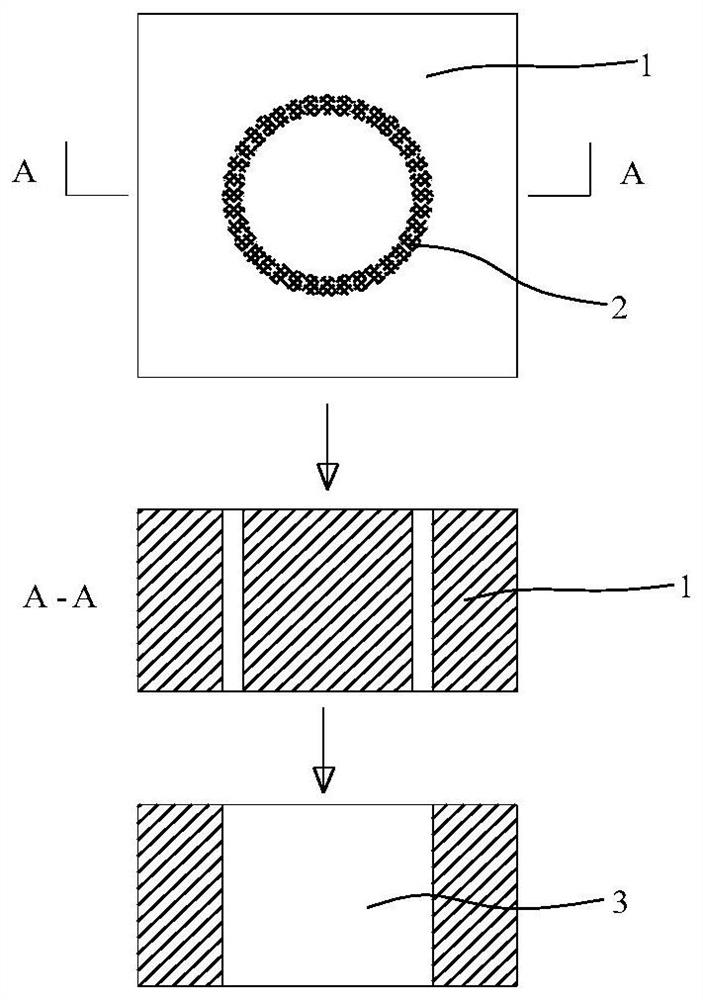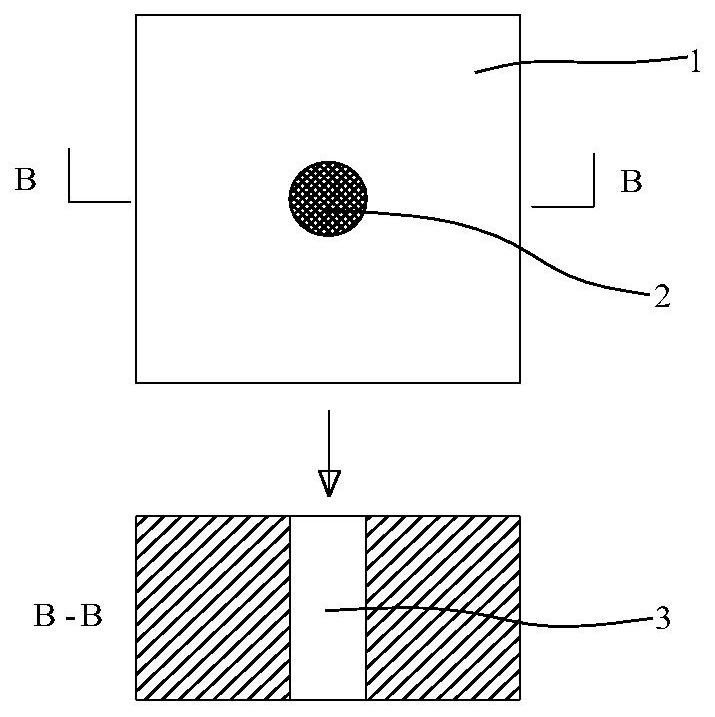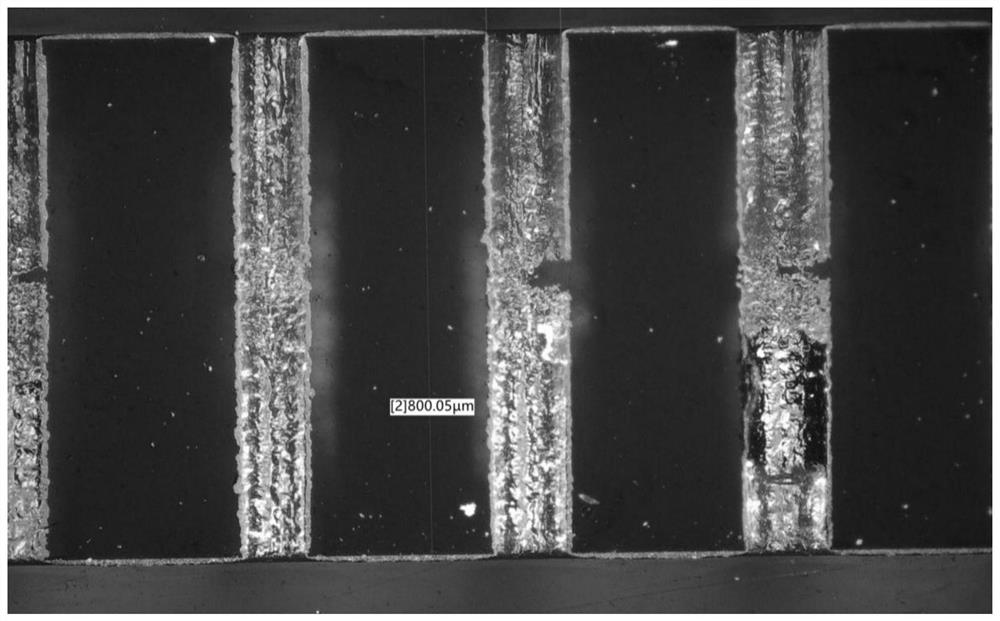Glass through hole processing method
A processing method and technology of through-glass holes, applied in the field of microelectronic packaging, can solve the problems of low efficiency, easy occurrence of micro-cracks, low yield and the like
- Summary
- Abstract
- Description
- Claims
- Application Information
AI Technical Summary
Problems solved by technology
Method used
Image
Examples
Embodiment 1
[0044] (1) Glass cleaning: put the flat glass 1 to be processed into a NaOH solution with a solubility of 12% and ultrasonically clean it for 20 minutes, then rinse it with deionized water for 20 minutes, and dry it at 120° C. for 1 hour.
[0045] (2), laser modification: delineate the area of the plate glass to be opened as the target area 2, then place the plate glass 1 under the titanium sapphire femtosecond laser, the pulse energy is 2uJ, and the laser scanning speed is 0.35mm / s, The target area 2 is irradiated circularly to modify the glass in the target area.
[0046] (3) Glass etching: Add 0.5 parts by weight of octylphenyl polyoxyethylene to 2 parts by weight of absolute ethanol, stir evenly and let it stand for 1 hour until the foam disappears, and prepare a surface active compound ;
[0047] Add 10 parts by weight of 40wt.% hydrofluoric acid to 100 parts by weight of pure water, then add 10 parts by weight of 50wt.% sulfuric acid and 2 parts by weight of potassium...
Embodiment 2
[0051] The present embodiment is basically the same as the above-mentioned embodiment one, the difference is the preparation of the surface-active compounding agent in the step (3):
[0052] Add 0.5 parts by weight of cetyltrimethylammonium chloride into 2 parts by weight of absolute ethanol, stir evenly, and then let stand for 1 hour until the foam disappears to prepare a surface active compound.
Embodiment 3
[0054] The present embodiment is basically the same as the above-mentioned embodiment one, the difference is the preparation of the surface-active compounding agent in the step (3):
[0055] Add 0.5 parts by weight of sodium α-alkenyl sulfonate to 2.5 parts by weight of absolute ethanol, stir evenly, and then let stand for 1 hour until the foam disappears to prepare a surface active compound.
PUM
 Login to View More
Login to View More Abstract
Description
Claims
Application Information
 Login to View More
Login to View More - R&D
- Intellectual Property
- Life Sciences
- Materials
- Tech Scout
- Unparalleled Data Quality
- Higher Quality Content
- 60% Fewer Hallucinations
Browse by: Latest US Patents, China's latest patents, Technical Efficacy Thesaurus, Application Domain, Technology Topic, Popular Technical Reports.
© 2025 PatSnap. All rights reserved.Legal|Privacy policy|Modern Slavery Act Transparency Statement|Sitemap|About US| Contact US: help@patsnap.com



